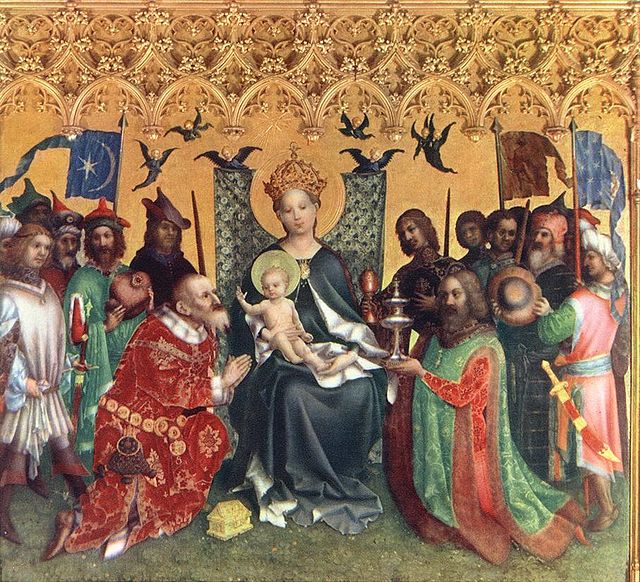The national flag of Algeria consists of two equal vertical bars, green and white, charged in the center with a red star and crescent, a symbol of Islam as the nation's prominent faith. The flag was adopted on 3 July 1962. A similar version was used by the Algerian government in exile from 1958 to 1962. The Western blazon is per pale vert and argent; a crescent and star gules.
A Sea Fight with Barbary Corsairs by Laureys a Castro, c. 1681. Note the various flags with crescents used by the pirates.
Bouzid Saâla's example of the flag was made by PPA activists and is currently kept in the museum in Sétif.
The star and crescent is a symbol which is a conjoined representation of a crescent and a star. It is used in various historical contexts, including as a prominent symbol of the Ottoman Empire, and in contemporary times, as a national symbol by some countries, and as a symbol of Islam. It was developed in the Greek colony of Byzantium ca. 300 BC, though it became more widely used as the royal emblem of Pontic king Mithridates VI Eupator after he incorporated Byzantium into his kingdom for a short period.
During the 5th century, it was present in coins minted by the Persian Sassanian Empire; the symbol was represented in the coins minted across the empire throughout the Middle East for more than 400 years from the 3rd century until the fall of the Sassanians after the Muslim conquest of Persia in the 7th century. The conquering Muslim rulers kept the symbol in their coinage during the early years of the caliphate, as the coins were exact replicas of the Sassanian coins.

The star and crescent symbol used in the minted coins of the Sassanian Empire from the 3rd century until the 7th century. This coin was coined under Ardashir III.
The Adoration of the Magi by Stephan Lochner; on the left, the crescent and star is depicted in the flag of representatives of Byzantium.
Sealing depicting the Neo Sumerian King, Ibbi-Sin seated with a star or Dingir and crescent adjacent to him
Depiction of the emblems of Ishtar (Venus), Sin (Moon), and Shamash (Sun) on a boundary stone of Meli-Shipak II (12th century BC)






